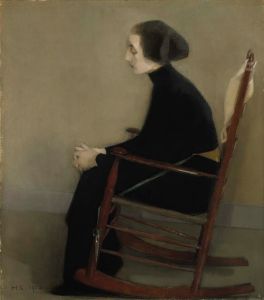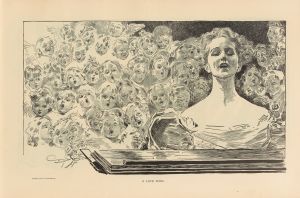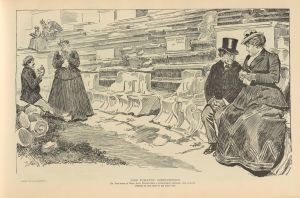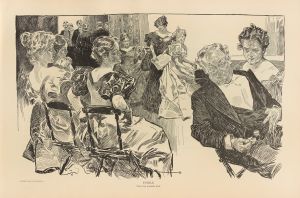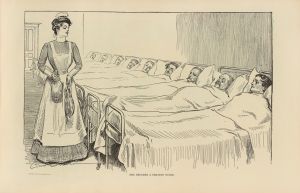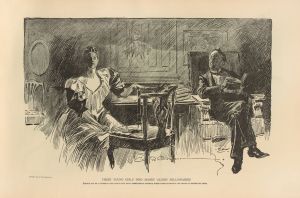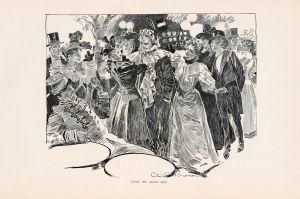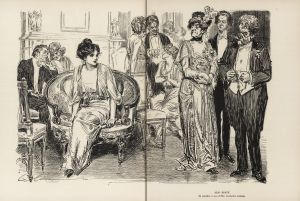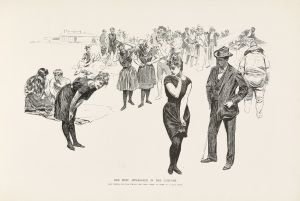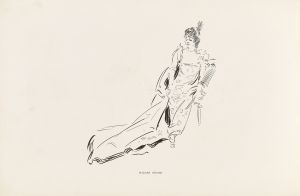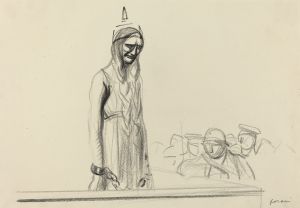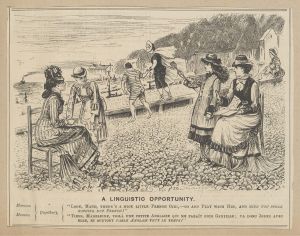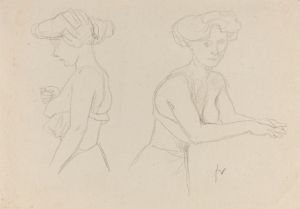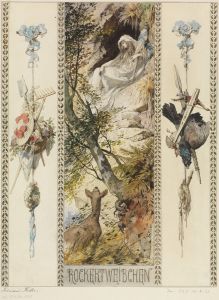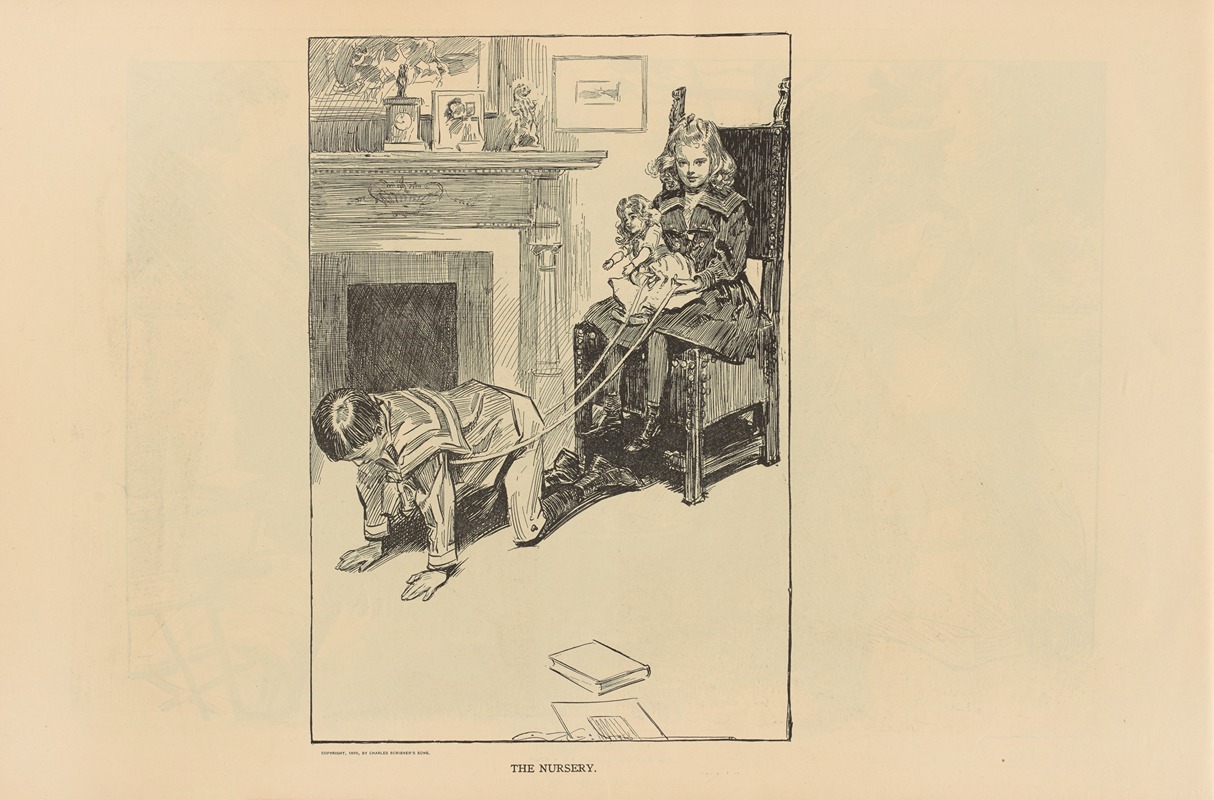
The nursery
A hand-painted replica of Charles Dana Gibson’s masterpiece The nursery, meticulously crafted by professional artists to capture the true essence of the original. Each piece is created with museum-quality canvas and rare mineral pigments, carefully painted by experienced artists with delicate brushstrokes and rich, layered colors to perfectly recreate the texture of the original artwork. Unlike machine-printed reproductions, this hand-painted version brings the painting to life, infused with the artist’s emotions and skill in every stroke. Whether for personal collection or home decoration, it instantly elevates the artistic atmosphere of any space.
Charles Dana Gibson was a prominent American illustrator, best known for his creation of the "Gibson Girl," a representation of the idealized American woman at the turn of the 20th century. His work was widely published in magazines such as Life, Scribner's, and Harper's, and he became one of the most celebrated illustrators of his time. Among his numerous works, "The Nursery" is one of his lesser-known illustrations, yet it still reflects his distinctive style and artistic approach.
"The Nursery" by Charles Dana Gibson captures a domestic scene that is characteristic of his work, which often depicted everyday life with a touch of humor and social commentary. Although specific details about this particular illustration are scarce, it is likely that "The Nursery" was created during the height of Gibson's career, between the late 19th and early 20th centuries, when he was actively contributing to various publications.
Gibson's illustrations are renowned for their detailed pen-and-ink technique, which he used to create intricate and expressive images. His ability to convey emotion and narrative through his drawings made his work highly popular and influential. In "The Nursery," Gibson would have employed these skills to depict a scene that resonates with viewers, possibly involving children and their caregivers, reflecting the social norms and family dynamics of the era.
The cultural context of Gibson's work is essential to understanding its impact. During the late 19th and early 20th centuries, America was undergoing significant social changes, including shifts in gender roles and family structures. Gibson's illustrations often commented on these changes, either by reinforcing traditional roles or by subtly critiquing them. The "Gibson Girl," for example, was both a celebration of the independent, modern woman and a reflection of societal expectations.
While "The Nursery" might not be as widely recognized as some of Gibson's other works, it nonetheless contributes to the broader understanding of his artistic legacy. His ability to capture the nuances of human interaction and societal norms in his illustrations has left a lasting impression on American art and culture.
Gibson's influence extended beyond his illustrations. He was also involved in the art community as a member of the Society of Illustrators and served as its president. His work inspired future generations of artists and illustrators, and his style can be seen in the works of many who followed him.
In summary, while specific information about "The Nursery" by Charles Dana Gibson is limited, it is representative of his broader body of work, which skillfully combined artistic talent with social observation. Gibson's illustrations remain a valuable part of American art history, offering insights into the cultural and social dynamics of his time.





